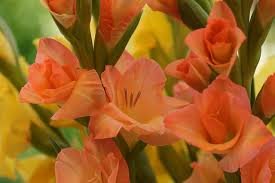Your basket is currently empty!
**The Lotus Flower: A Symbol of Tradition and Cultural Heritage**

The lotus flower holds a special place in the hearts of people around the world, revered not only for its natural beauty but also for its deep-rooted symbolism in traditional cultures. Across diverse societies and civilizations, the lotus flower is woven into the fabric of tradition, representing purity, enlightenment, and spiritual awakening. In this exploration, we delve into the rich tapestry of cultural significance that surrounds the lotus flower and its enduring legacy in traditional societies.
**Lotus Flower in Asian Cultures:**
In many Asian cultures, the lotus flower is a symbol of purity, enlightenment, and rebirth. In ancient Indian mythology, the lotus is associated with divine deities such as Brahma, Vishnu, and Lakshmi, representing creation, preservation, and prosperity, respectively. In Hindu and Buddhist traditions, the lotus is often depicted as emerging from the navel of the gods or rising from the muddy waters to symbolize spiritual purity and enlightenment.
In Chinese culture, the lotus flower holds similar significance, symbolizing purity of heart and mind amidst the chaos of the world. The lotus is a common motif in Chinese art and literature, often depicted in paintings, poetry, and ceramics as a symbol of beauty, grace, and resilience. In traditional Chinese medicine, lotus seeds and roots are valued for their medicinal properties and used to promote health and vitality.
**Lotus Flower in Egyptian Mythology:**
In ancient Egyptian mythology, the lotus flower was revered as a symbol of rebirth and regeneration. The blue lotus, known as Nymphaea caerulea, was particularly sacred to the Egyptians and often depicted in religious art and symbolism. The lotus was associated with the sun god Ra, who was believed to emerge from a giant lotus at the beginning of time, symbolizing the cycle of life, death, and resurrection.
In Egyptian culture, the lotus flower was also associated with the afterlife, with funerary texts often describing the deceased as being reborn like the lotus emerging from the waters. Lotus flowers were commonly placed in tombs and burial sites as offerings to the gods, ensuring the deceased’s safe journey to the afterlife.
**Lotus Flower in Buddhist Traditions:**
In Buddhism, the lotus flower holds profound symbolic significance, representing the journey from ignorance to enlightenment. The lotus is often used as a metaphor for the human soul, which, like the lotus, has the potential to rise above the muddy waters of suffering and attachment to attain spiritual purity and awakening.
In Buddhist art and iconography, the lotus flower is a common motif, often depicted as a pedestal for statues of the Buddha or as a decorative element in temples and monasteries. The lotus is also a popular subject in Buddhist scriptures and teachings, where it is used to convey essential spiritual concepts such as detachment, resilience, and the impermanence of life.
**Lotus Flower in Western Culture:**
While the lotus flower holds deep cultural significance in Eastern traditions, it has also found its place in Western culture as a symbol of beauty, purity, and spiritual awakening. In literature, art, and popular culture, the lotus is often used as a metaphor for personal growth, transformation, and the pursuit of higher consciousness.
In Western art, the lotus flower is a popular subject for paintings, sculptures, and other forms of artistic expression, where it is celebrated for its graceful form and timeless beauty. In literature, the lotus is often used as a symbol of love, transcendence, and the search for meaning in a chaotic world.
**Conclusion:**
In conclusion, the lotus flower’s rich symbolism and cultural significance have made it a beloved symbol of tradition and heritage in cultures around the world. Whether as a symbol of purity and enlightenment in Asian traditions, a metaphor for rebirth and regeneration in Egyptian mythology, or a source of inspiration for personal growth and transformation in Western culture, the lotus flower continues to captivate hearts and minds with its timeless beauty and profound symbolism. As we reflect on the legacy of the lotus flower in traditional cultures, we are reminded of the enduring power of symbolism to unite and inspire people across time and space.
Leave a Reply